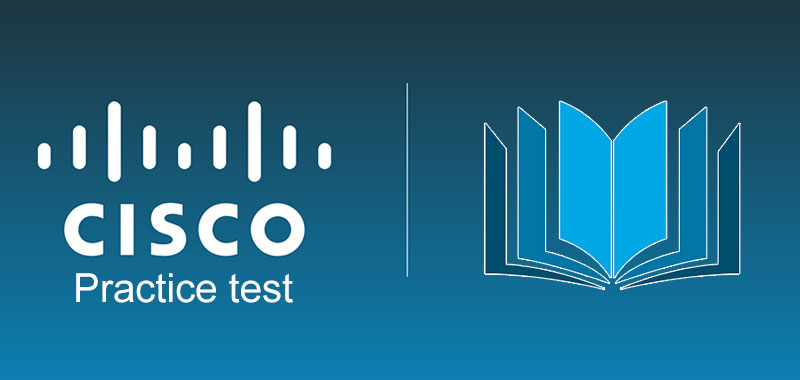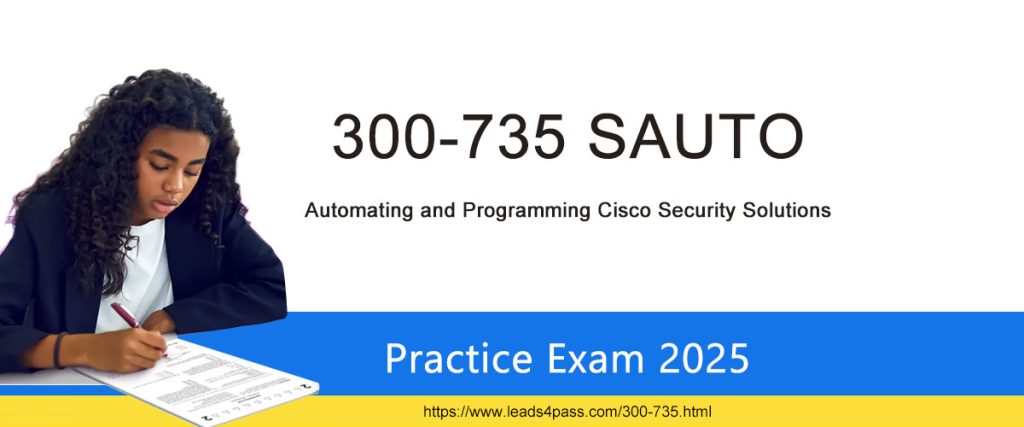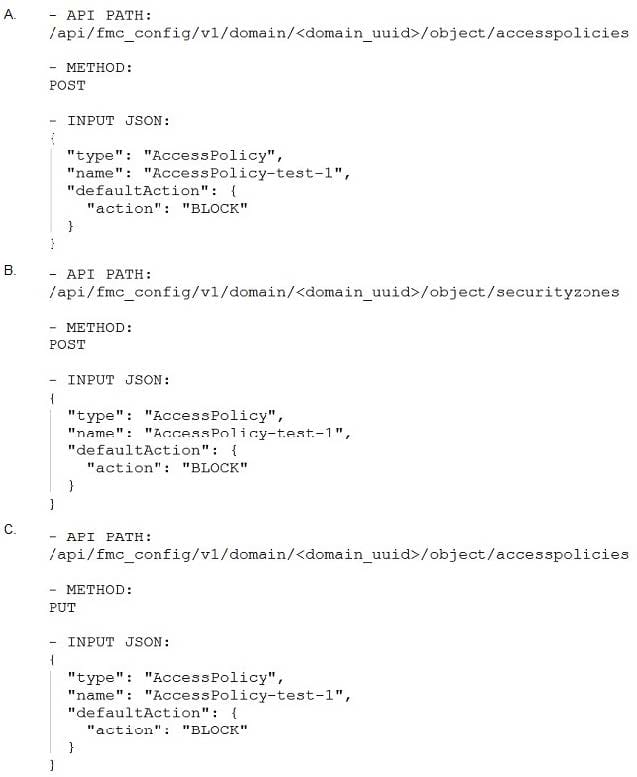
The latest updated Cisco 350-401 exam dumps and free 350-401 exam practice questions and answers! Latest updates from leads4pass Cisco 350-401 Dumps PDF and 350-401 Dumps VCE, leads4pass 350-401 exam questions updated and answers corrected! Get the full Cisco 350-401 dumps from https://www.leads4pass.com/350-401.html (VCE&PDF)
Latest 350-401 PDF for free
Share the Cisco 350-401 Dumps PDF for free From leads4pass 350-401 Dumps part of the distraction collected on Google Drive shared by leads4pass
https://drive.google.com/file/d/1hINrJZLYuMmf1B-NXO_2J2VCOFRJ7yPb/
The latest updated Cisco 350-401 Exam Practice Questions and Answers Online Practice Test is free to share from leads4pass (Q1-Q13)
QUESTION 1
Into which two pieces of information does the LISP protocol split the device identity? (Choose two)
A. Device ID
B. Enterprise Identifier
C. LISP ID
D. Routing Locator
E. Resource Location
F. Endpoint Identifier
Correct Answer: DF
Locator ID Separation Protocol (LISP) is a network architecture and protocol that implements the use of two
namespaces instead of a single IP address:
+
Endpoint identifiers (EIDs)–assigned to end hosts.
+
Routing locators (RLOCs)–assigned to devices (primarily routers) that make up the global routing system. Reference:
https://www.cisco.com/c/en/us/td/docs/ios-xml/ios/iproute_lisp/configuration/xe-3s/irl-xe-3sbook/irl-overview.html
QUESTION 2
A client device roams between access points located on different floors in an atrium. The access points joined to the
same controller and configuration in local mode. The access points are in different IP addresses, but the client VLAN in
the group same.
What type of roaming occurs?
A. inter-controller
B. inter-subnet
C. intra-VLAN
D. intra-controller
Correct Answer: B
Mobility, or roaming, is a wireless LAN client\\’s ability to maintain its association seamlessly from one access point to
another securely and with as little latency as possible. Three popular types of client roaming are: Intra-Controller
Roaming: Each controller supports the same-controller client roaming across access points managed by the same
controller. This roaming is transparent to the client as the session is sustained, and the client continues using the same
DHCP-assigned or client-assigned IP address. Inter-Controller Roaming: Multiple-controller deployments support client
roaming across access points managed by controllers in the same mobility group and on the same subnet. This roaming
is also transparent to the client because the session is sustained and a tunnel between controllers allows the client to
continue using the same DHCP- or client-assigned IP address as long as the session remains active. Inter-Subnet
Roaming: Multiple-controller deployments support client roaming across access points managed by controllers in the
same mobility group on different subnets. This roaming is transparent to the client because the session is sustained and
a tunnel between the controllers allows the client to continue using the same DHCP-assigned or client-assigned IP
address as long as the session remains active.
Reference: https://www.cisco.com/c/en/us/td/docs/wireless/controller/7- 4/configuration/guides/
consolidated/b_cg74_CONSOLIDATED/b_cg74_CONSOLIDA TED_chapter_01100.html
In the three types of client roaming above, only with Inter-Subnet Roaming the controllers are in different subnets.
QUESTION 3
Refer to the exhibit.
![[2021.3] leads4pass 350-401 practice test q3](https://www.vcecert.com/wp-content/uploads/2021/03/q3-7.jpg)
What is two effects of this configuration? (Choose two.)
A. Inside source addresses are translated to the 209.165.201.0/27 subnet.
B. It establishes a one-to-one NAT translation.
C. The 10.1.1.0/27 subnet is assigned as the inside global address range.
D. The 209.165.201.0/27 subnet is assigned as the outside local address range.
E. The 10.1.1.0/27 subnet is assigned as the inside local addresses.
Correct Answer: AE
QUESTION 4
Which statement about the default QoS configuration on a Cisco switch is true?
A. The Cos value of each tagged packet is modified
B. Port trust is enabled
C. The Port Cos value is 0
D. All traffic is sent through four egress queues
Correct Answer: C
QUESTION 5
IS OSPF, which LAS type is responsible for pointing to the ASBR router?
A. type 1
B. type 2
C. type 3
D. type 4
Correct Answer: D
QUESTION 6
When reason could cause an OSPF neighborship to be in the EXSTART/EXCHANGE state?
A. Mismatched OSPF network type
B. Mismatched areas
C. Mismatched MTU size
D. Mismatched OSPF link costs
Correct Answer: C
When OSPF adjacency is formed, a router goes through several state changes before it becomes fully adjacent with its
neighbor. The states are Down -> Attempt (optional) -> Init -> 2-Way -> Exstart -> Exchange -> Loading -> Full. Short
descriptions about these states are listed below: Down no information (hellos) has been received from this neighbor.
Attempt: only valid for manually configured neighbors in an NBMA environment. In Attempt state, the router sends
unicast hello packets every poll interval to the neighbor, from which hellos have not been received within the dead
interval. Init: specifies that the router has received a hello packet from its neighbor, but the receiving router\\’s ID was
not included in the hello packet 2-Way: indicates bi-directional communication has been established between two
routers. Extract: Once the DR and BDR are elected, the actual process of exchanging link-state information can start
between the routers and their DR and BDR. Exchange: OSPF routers exchange database descriptor (DBD) packets
Loading: In this state, the actual exchange of link-state information occurs Full: routers are fully adjacent with each other
(Reference: http://www.cisco.com/en/US/tech/tk365/technologies_tech_note09186a0080093f0e.shtml) Neighbors Stuck
in Exstart/Exchange State the problem occurs most frequently when attempting to run OSPF between a Cisco router
and another vendor\\’s router. The problem occurs when the maximum transmission unit (MTU) settings for neighboring
router interfaces don\\’t match. If the router with the higher MTU sends a packet larger than the MTU set on the
neighboring router, the neighboring router ignores the packet.
Reference: https://www.cisco.com/c/en/us/support/docs/ip/open-shortest-path-first-ospf/1368412.html#neighbors
QUESTION 7
When a wireless client roams between two different wireless controllers, a network connectivity outage is experienced
for a period of time.
Which configuration issue would cause this problem?
A. Not all of the controllers in the mobility group are using the same mobility group name.
B. Not all of the controllers within the mobility group are using the same virtual interface IP address.
C. All of the controllers within the mobility group are using the same virtual interface IP address.
D. All of the controllers in the mobility group are using the same mobility group name.
Correct Answer: B
A prerequisite for configuring Mobility Groups is “All controllers must be configured with the same virtual interface IP
address”. If all the controllers within a mobility group are not using the same virtual interface, inter-controller roaming
may appear to work, but the handoff does not complete, and the client loses
connectivity for a period of time. -> Answer B is correct.
Reference: https://www.cisco.com/c/en/us/td/docs/wireless/controller/8-5/config-guide/b_cg85/mobility_groups.html https://www.cisco.com/c/en/us/support/docs/wireless/4400-series-wireless-lan-controllers/107188-mobilitygroups-faq.html
QUESTION 8
![[2021.3] leads4pass 350-401 practice test q8](https://www.vcecert.com/wp-content/uploads/2021/03/q8-9.jpg)
Refer to the exhibit. An engineer configures monitoring on SW1 and enters the show command to verify operation. What
does the output confirm?
A. SPAN session 1 monitor activity on VLAN 50 of a remote switch
B. SPAN session 2 only monitors egress traffic exiting port FastEthernet 0/14.
C. SPAN session 2 monitors all traffic entering and exiting port FastEthernet 0/15.
D. RSPAN session 1 is incompletely configured for monitoring
Correct Answer: D
QUESTION 9
Which two statements about HSRP are true? (Choose two) A. It supports unique virtual MAC addresses
B. Its virtual MAC is 0000.0C07.AC xx
C. Its default configuration allows for pre-emption
D. It supports tracking
E. Its multicast virtual MAC is 0000.5E00.01xx
Correct Answer: BD
QUESTION 10
Which two protocols are used with YANG data models? (Choose two.)
A. HTTPS
B. SSH
C. RESTCONF
D. TLS
E. NFTCONF
Correct Answer: CE
YANG (Yet Another Next Generation) is a data modeling language for the definition of data sent over the network
management protocols such as the NETCONF and RESTCONF.
QUESTION 11
DRAG DROP
Drag and drop the characteristics from the left onto the routing protocols they describe on the right.
Select and Place:
![[2021.3] leads4pass 350-401 practice test q11](https://www.vcecert.com/wp-content/uploads/2021/03/q11-5.jpg)
Correct Answer:
![[2021.3] leads4pass 350-401 practice test q11-1](https://www.vcecert.com/wp-content/uploads/2021/03/q11-1-3.jpg)
QUESTION 12
In which part of the HTTP message is the content type specified?
A. HTTP method
B. URI
C. header
D. body
Correct Answer: C
Reference: https://developer.mozilla.org/en-US/docs/Web/HTTP/Headers/Content-Type
QUESTION 13
Which feature does Cisco TrustSec use to provide scalable, secure communication throughout a network?
A. security group tag ACL assigned to each port on a switch
B. security group tag number assigned to each port on a network
C. security group tag number assigned to each user on a switch
D. security group tag ACL assigned to each router on a network
Correct Answer: B
Cisco TrustSec uses tags to represent logical group privilege. This tag, called a Security Group Tag (SGT), is used in
access policies. The SGT is understood and is used to enforce traffic by Cisco switches, routers, and firewalls. Cisco
TrustSec is defined in three phases: classification, propagation, and enforcement. When users and devices connect to a
network, the network assigns a specific security group. This process is called classification. Classification can be based
on the results of the authentication or by associating the SGT with an IP, VLAN, or port-profile (-> Answer \\’ security
group tag ACL assigned to each port on a switch\\’ and answer \\’ security group tag number assigned to each user on a
switch\\’ are not correct as they say “assigned … on a switch” only. Answer \\’security group tag ACL assigned to each
router on a network\\’ is not correct either as it says “assigned to each router”).
Reference: https://www.cisco.com/c/dam/en/us/solutions/collateral/borderless-networks/trustsec/C07730151-00_overview_of_trustSec_og.pdf
Vcecert shares the latest updated Cisco 350-401 exam exercise questions, 350-401 dumps pdf for free.
All exam questions and answers come from the leads4pass exam dumps shared part! leads4pass updates throughout the year and shares a portion of your exam questions for free to help you understand the exam content and enhance your exam experience! Get the full Cisco 350-401 exam dumps questions at: https://www.leads4pass.com/350-401.html (pdf&vce)
ps.
Get free Cisco 350-401 dumps PDF online: https://drive.google.com/file/d/1hINrJZLYuMmf1B-NXO_2J2VCOFRJ7yPb/
Discover more from Provide the most popular Cisco (CCNA, CCNP, CCIE, CCDP...) IT certification exam questions and answers, exam dumps, Leads4pass expert team will help you easily obtain Cisco, Microsoft, CompTIA, Citrix, Amazon IT certification
Subscribe to get the latest posts sent to your email.


Recent Comments